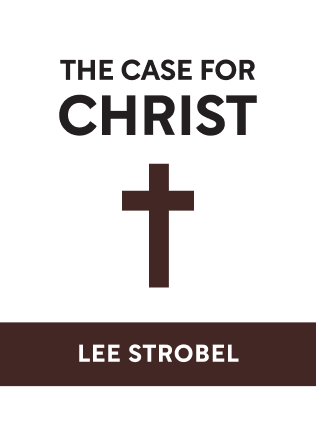

This article is an excerpt from the Shortform summary of "The Case for Christ" by Lee Strobel. Shortform has the world's best summaries of books you should be reading.
Like this article? Sign up for a free trial here .
What information does Luke give us? How can we know Luke’s accounts are historically accurate?
Luke as a historian is able to provide valuable insights into the life of Jesus. Many scholars also agree that Luke as a historian provided mostly accurate accounts.
Keep reading to find out more about Luke as a historian, and what the gospel according to Luke can tell us about Jesus.
Luke as a Historian
Luke’s contributions to the New Testament, the gospel of Luke and the book of Acts, comprise almost one quarter of the entire text of the Bible. If we can be sure that Luke is a conscientious and trustworthy historian, we can be confident in his depiction of Jesus as well. This is the basis of the idea of Luke as a historian.
The consensus among contemporary scholars is that Luke, historian and theologian. is indeed a careful, reliable recorder of history. In fact, over the years, scholars have asserted that Luke was mistaken about certain historical facts only to be proven wrong by archaeological findings. For example, many scholars saw Luke’s reference to Lysanias as the tetrarch (governor) of Abilene in 27 AD as a disqualifying error—Lysanias ruled Chalcis 50 years before; he was no tetrarch. An inscription found on a dig, however, later proved Luke right. One study from the early ’90s reviewed each of Luke’s references to physical places and found not a single mistake. It stands to reason that if Luke was assiduous enough to get the ancillary details correct, it’s likely he got the really big stuff—like Jesus’s resurrection—right as well.
Multiple Attestation
Under this criterion, a saying of Jesus can only be considered authentic if it’s found in more than one source. This again is the important of Luke as a historian.
One problem with this rubric is that many of our most trusted sources of ancient history are singular—that is, for many events of antiquity that we assume actually happened, we only have a single source. In other words, the Jesus Seminar holds the events of the bible to a stricter standard than other ancient events.
Another problem is that, according to the Jesus Seminar’s precepts, the mention of a saying in more than one gospel doesn’t count as multiple attestation. For this rule, they’re relying on the argument that Matthew and Luke, historian and theologian, are based on Mark, thus any saying that’s mentioned in all three really amounts to just one mention. What this position fails to take into account is recent scholarship that disputes Matthew’s and Luke’s reliance on Mark (see the discussion of “Q” in Chapter 1).
The Discrepancies
Naturally, there are some differences among the gospels, including the gospel according to Luke regarding Jesus’s empty tomb—differences which skeptics have latched onto to call the entire Resurrection into question. Luke as a historian is one of these.
For example, in Matthew, Mary and Mary Magdalene arrive at the tomb at dawn and an angel opens the tomb for them; in Mark, the women arrive at sunrise and the tomb is already open; and in Luke, the women arrive at dawn to find the tomb already open. There also discrepancies regarding who arrives at the tomb (Is it just Mary and Mary Magdalene, or are Salome and Joanna there, too?) and who’s in the tomb when they arrive (in Mark, a “youth” is inside; in Luke, it’s “two men”).
When one focuses on these minor details, however, one risks losing the forest for the trees. In other words, the gospels are remarkably consistent with regard to the major events of the Resurrection: Joseph of Arimathea’s handling of Jesus’s body and its entombment; the arrival of some group of women at the tomb Sunday morning; the tomb’s emptiness; and the vision of angels reporting that Jesus has risen. The core of the story is consistent across the gospels, and so it’s better scholarly practice to trust those consistencies rather than dismiss them. In fact, if the gospels aligned perfectly in all their details, they would (counterintuitively) be less trustworthy: One would suspect that the gospel writers, including in the gospel according to Luke, had colluded to get their story straight.
The immateriality of the discrepancies notwithstanding, there are in fact ways to harmonize the gospels’ accounts. For example, all the writers mention that Mary and Mary Magdalene arrived at the tomb with other women; some writers simply chose to mention some of the women by name whereas others didn’t. In general, you can draw the conclusion that Luke, historian and theologian records events accurately, The gospel of Luke is often considered reliable by scholars.

———End of Preview———
Like what you just read? Read the rest of the world's best summary of Lee Strobel's "The Case for Christ" at Shortform .
Here's what you'll find in our full The Case for Christ summary :
- How an atheist lawyer-journalist researched Christ and began believing
- The key arguments against the existence of Christ, and why they don't hold up
- How to make up your own mind about whether Christ existed







How would you respond to this statement: Never believe an extra-ordinary claim (such as a dead person sighting) when the eyewitness status of the person making the claim is in dispute.
https://lutherwasnotbornagaincom.wordpress.com/2023/01/30/never-believe-an-extra-ordinary-claim-when-the-eyewitness-status-of-the-person-making-the-claim-is-in-dispute/
Thanks,
Gary